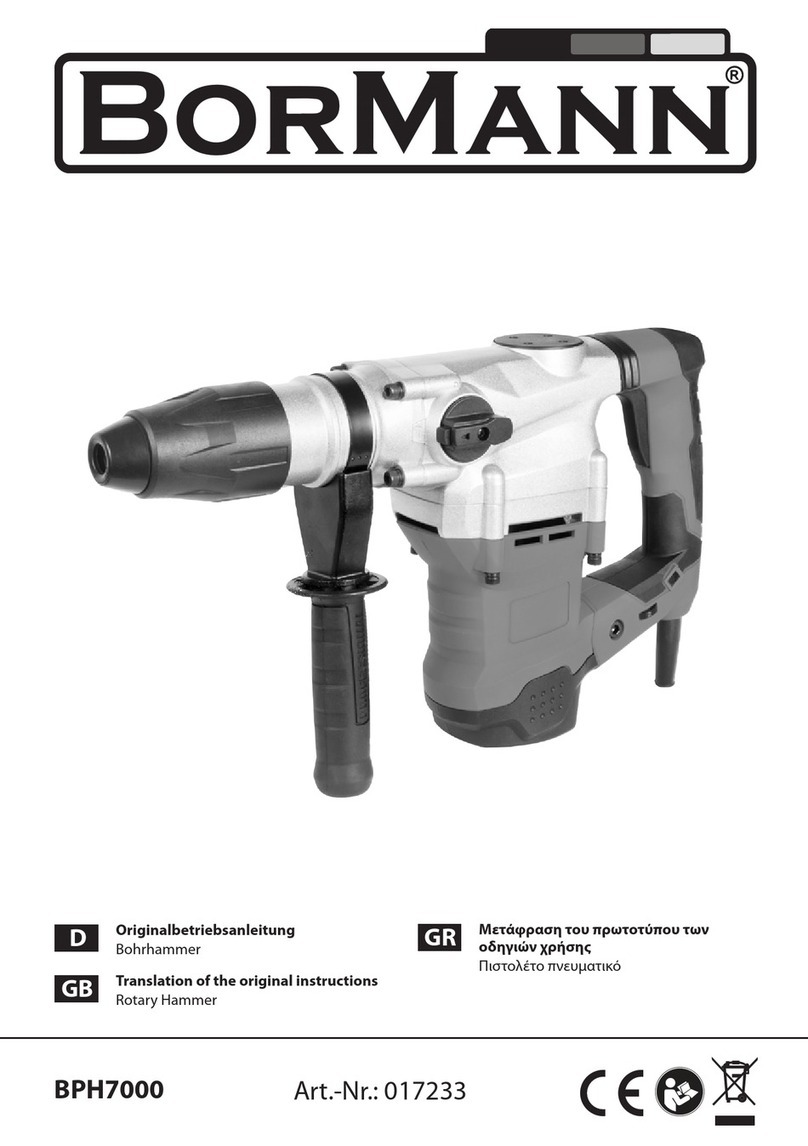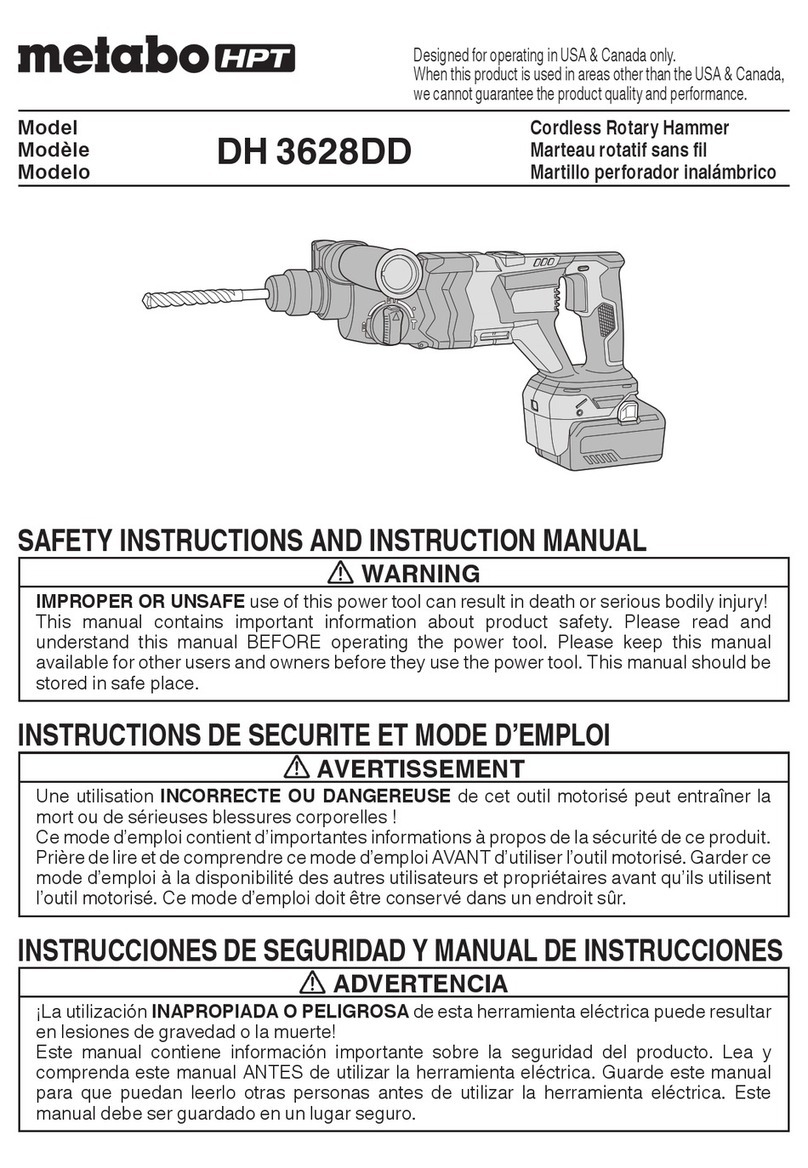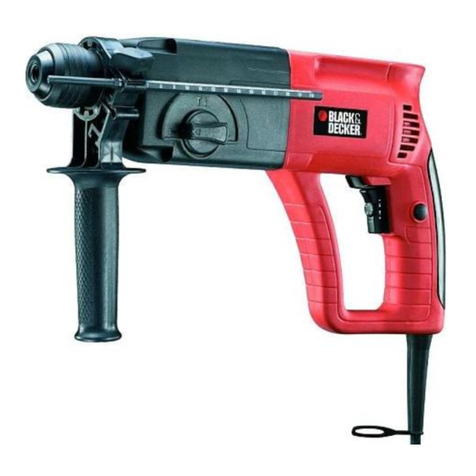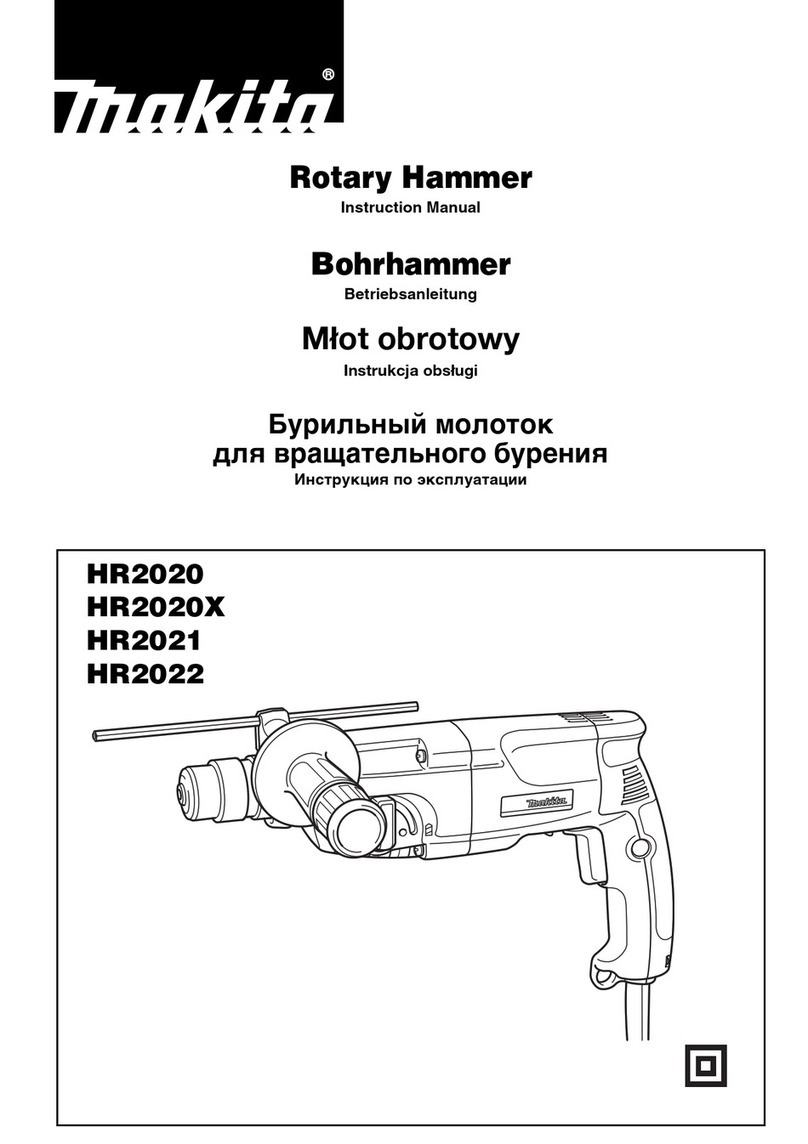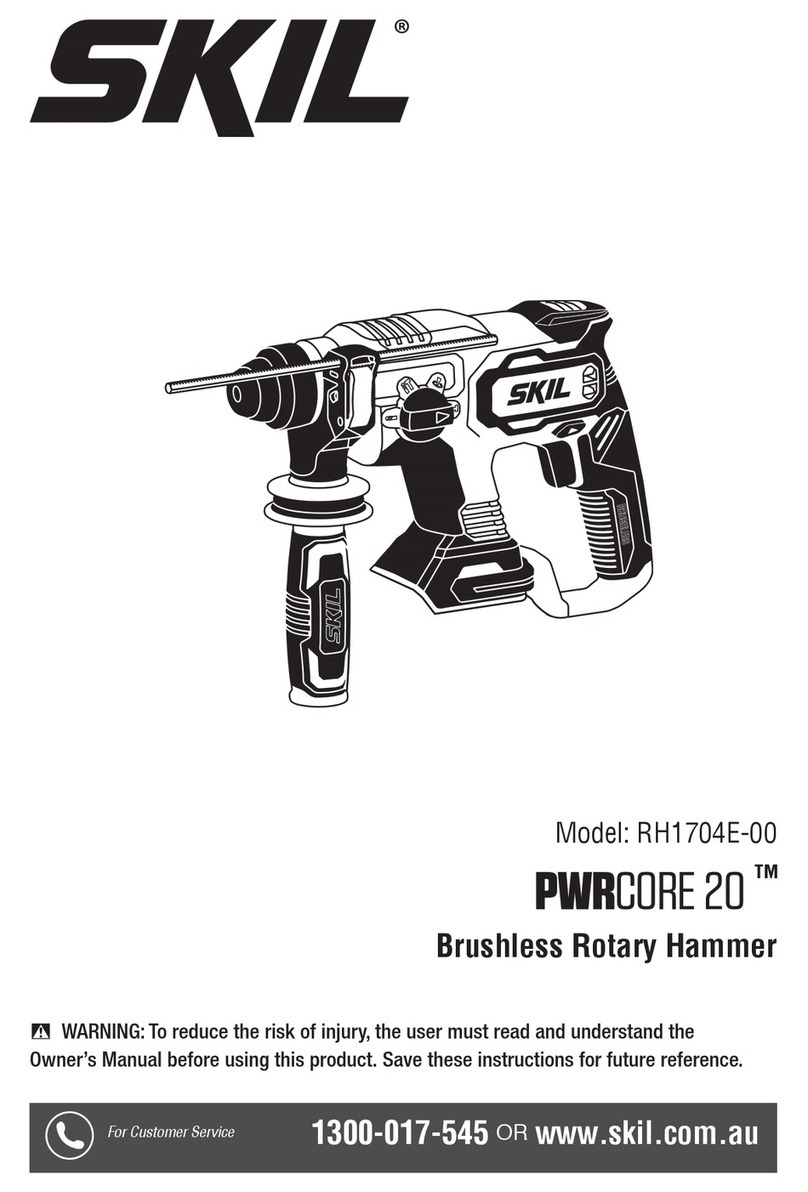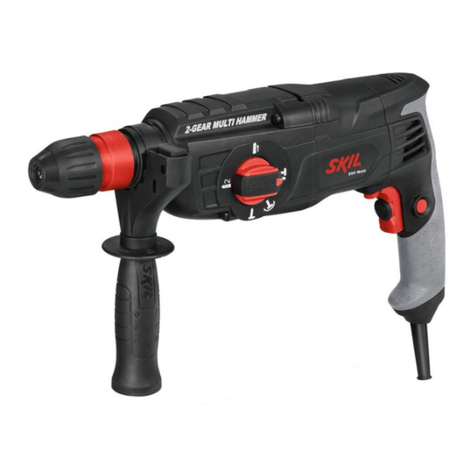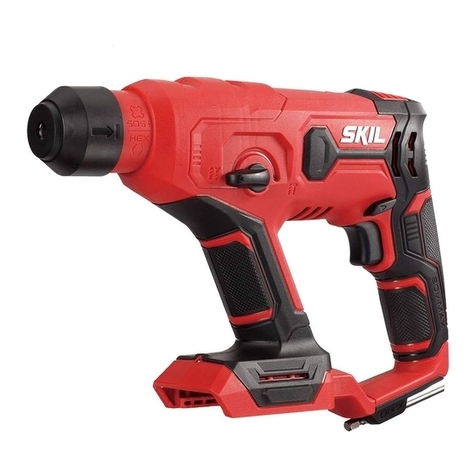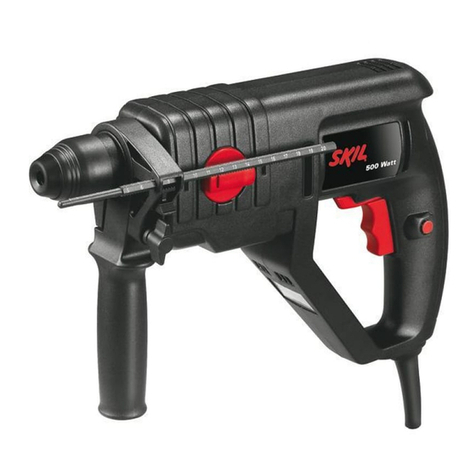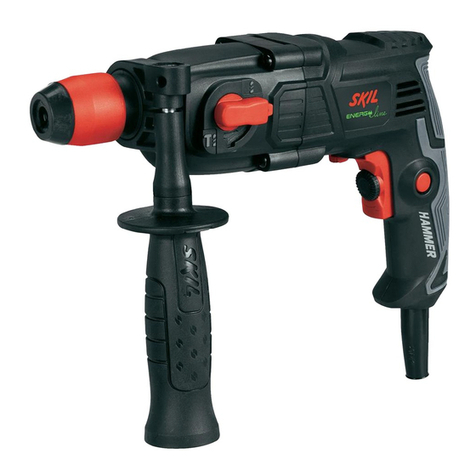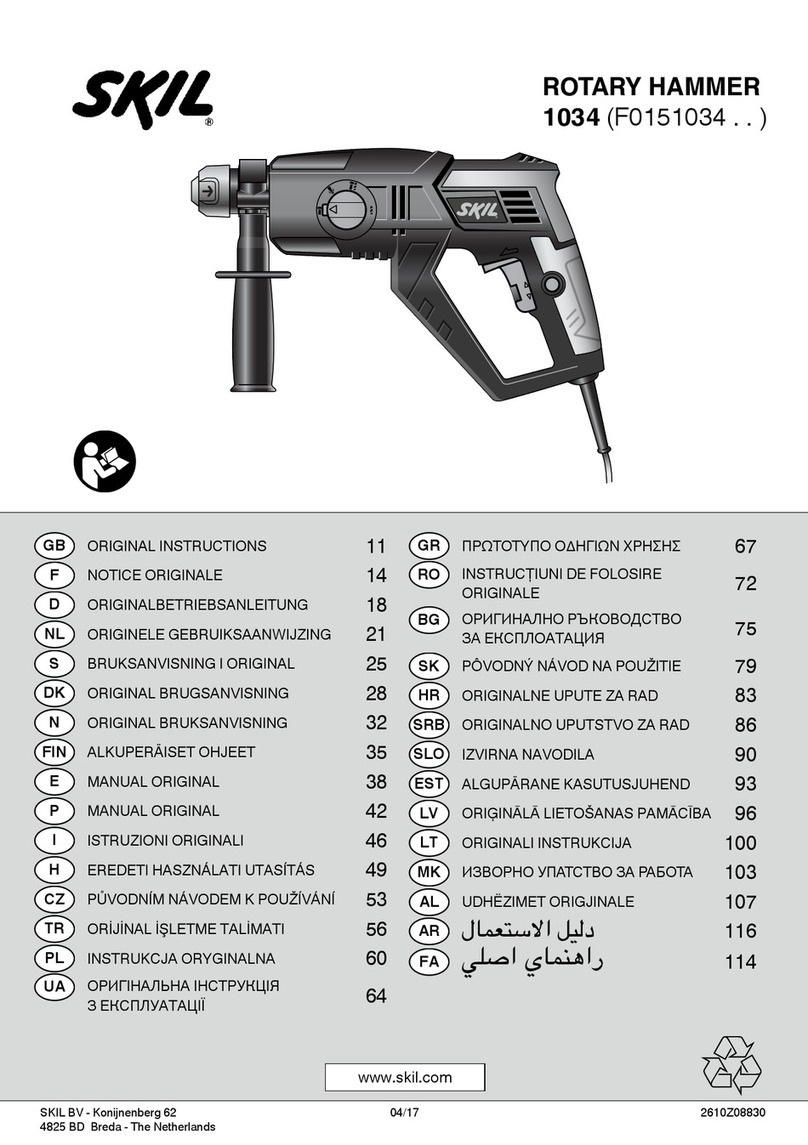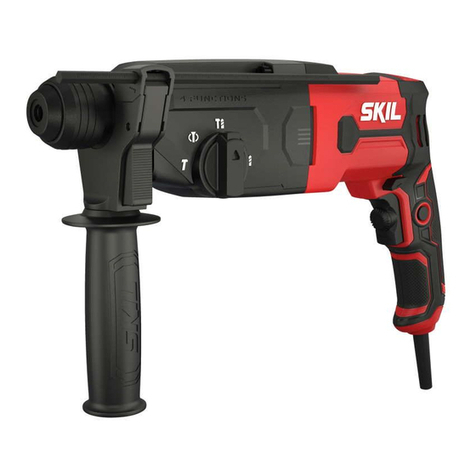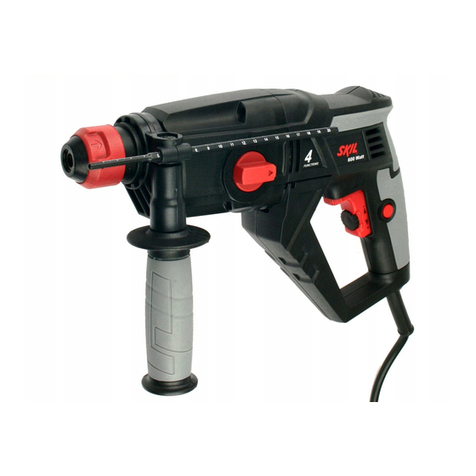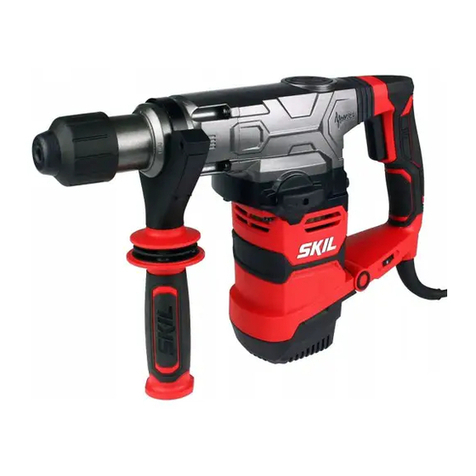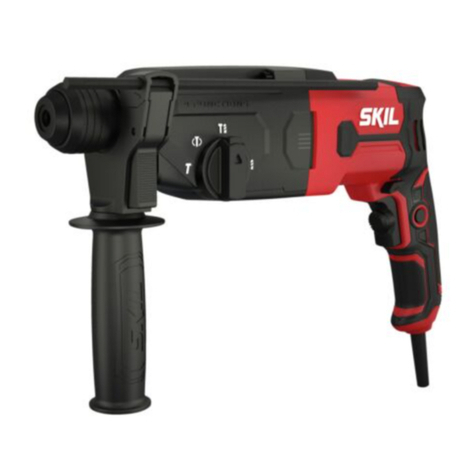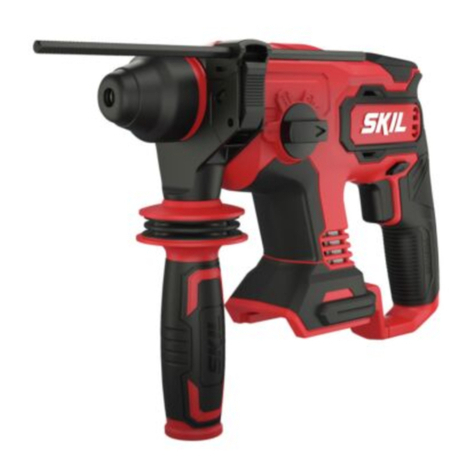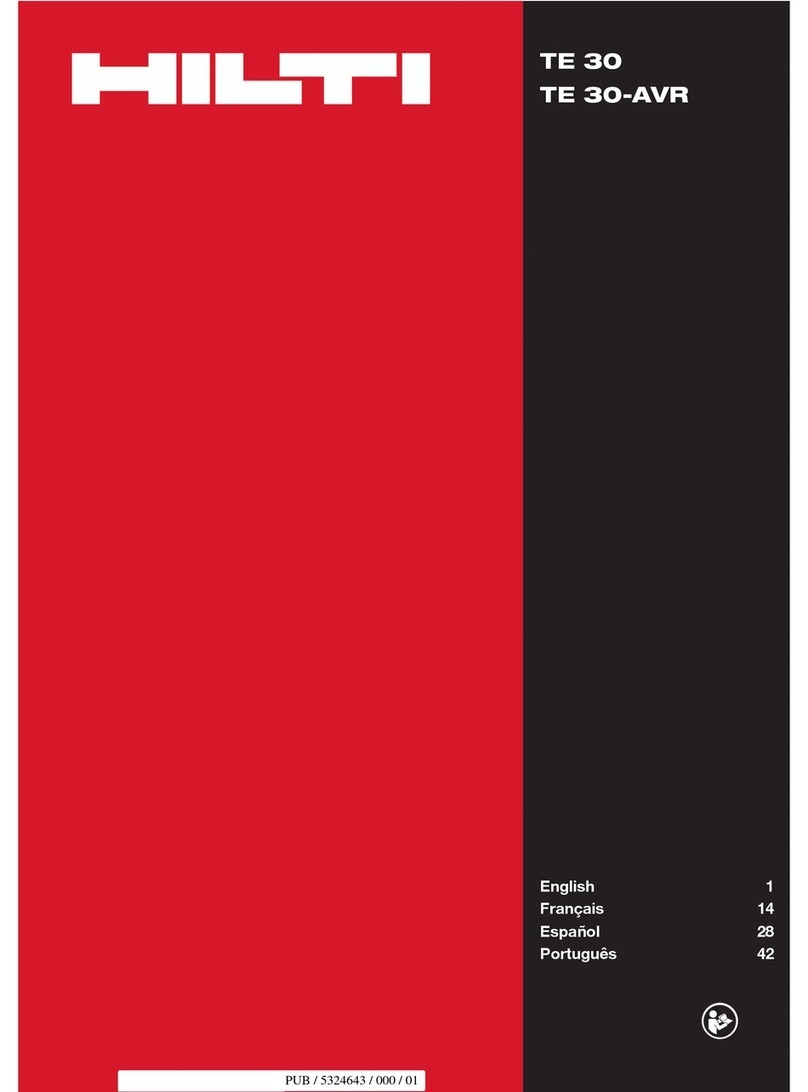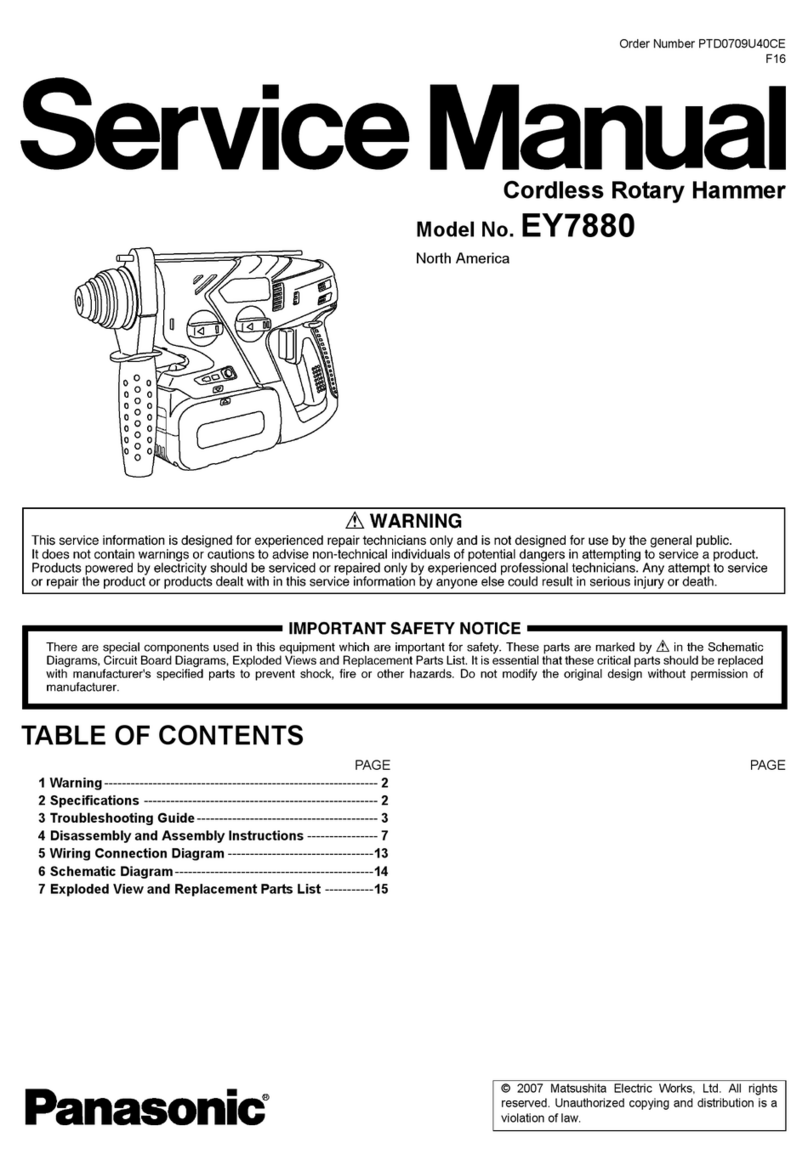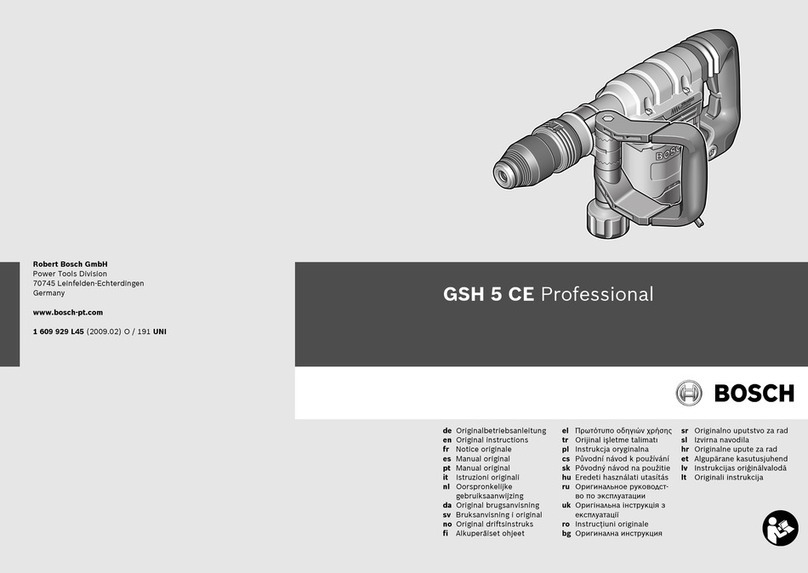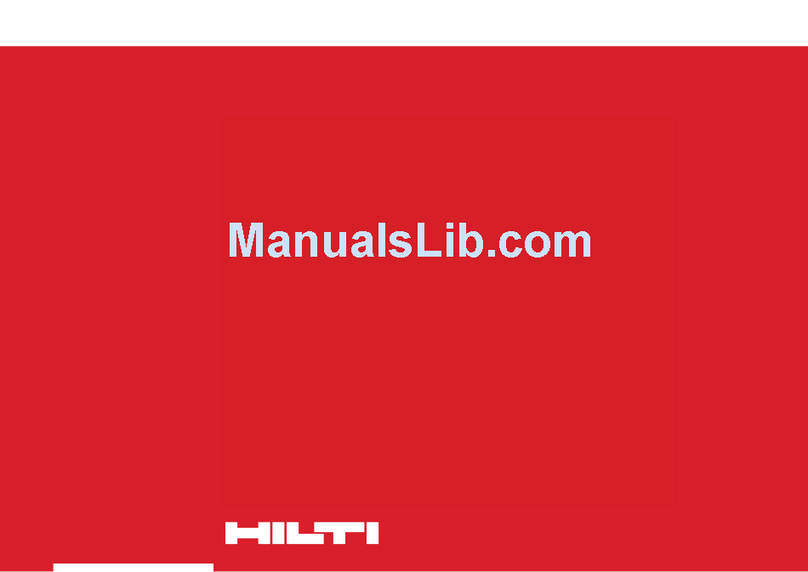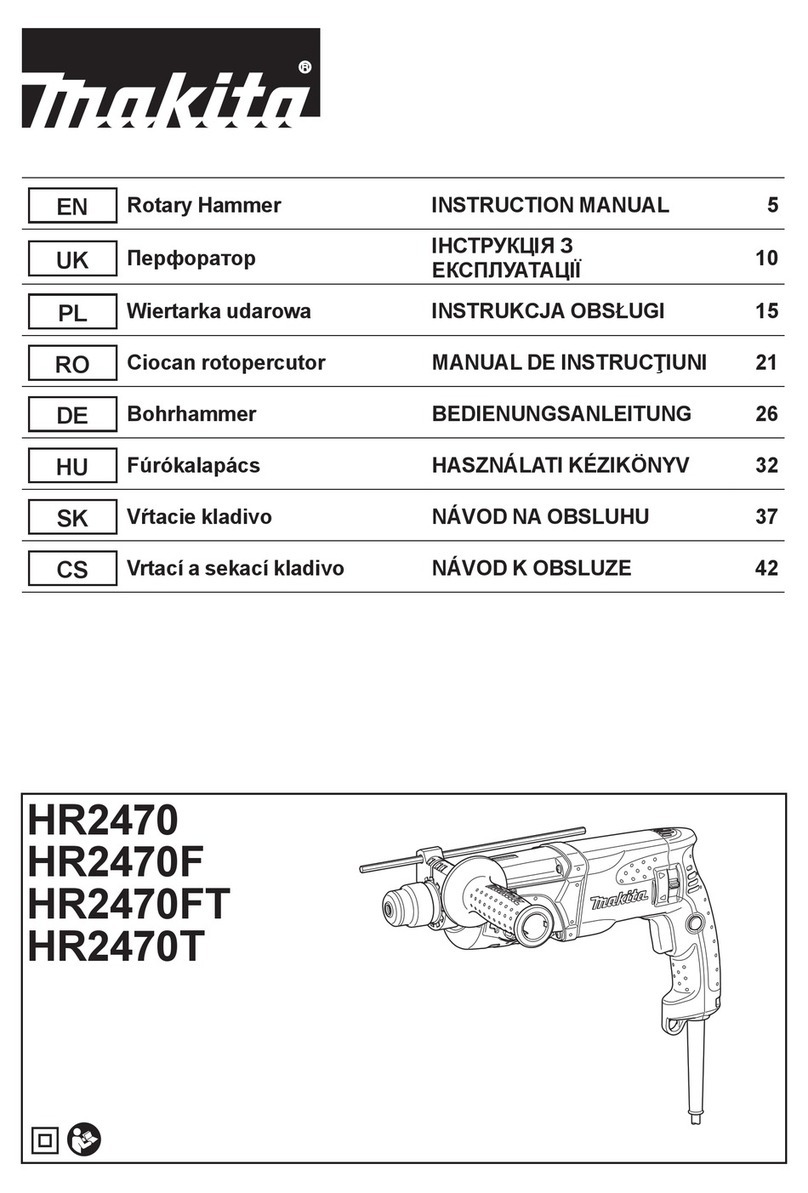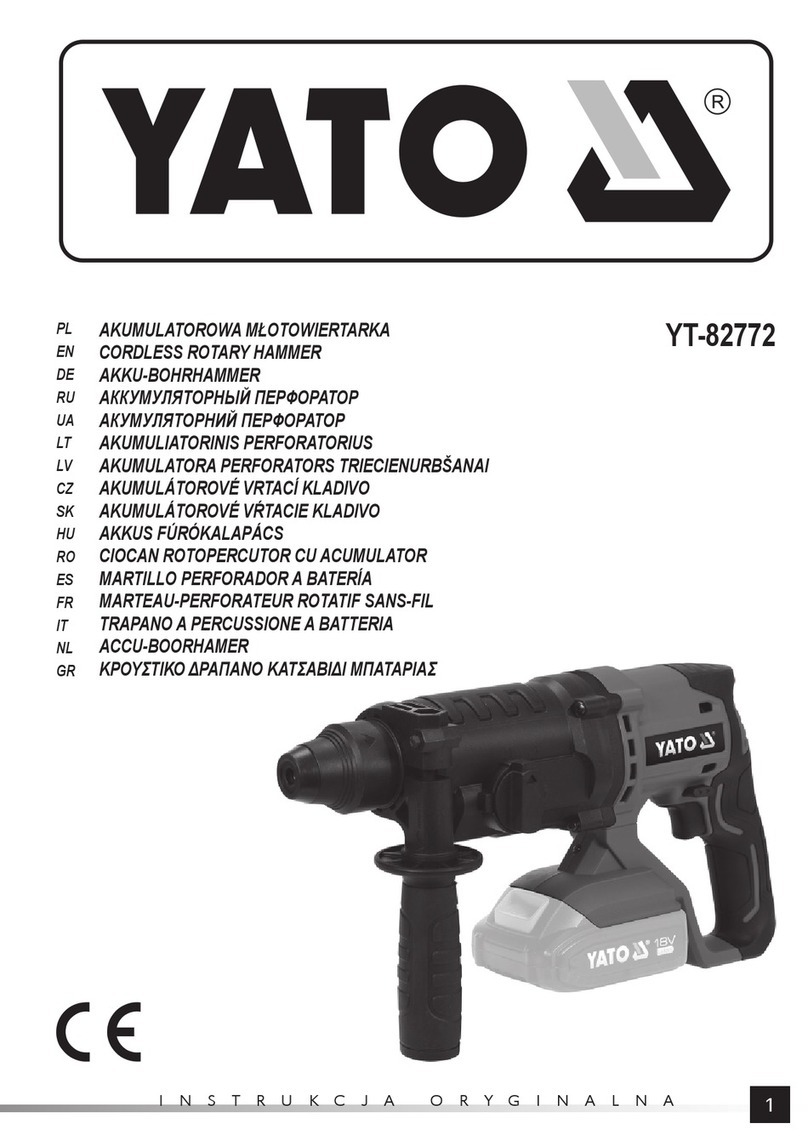
10
6) SERVICE
a)
person using only identical replacement parts. This
will ensure that the safety of the power tool is maintained.
b) Never service damaged battery packs. Service
of battery packs should only be performed by the
manufacturer or authorized service providers.
SAFETY INSTRUCTIONS FOR HAMMERS
• Wear ear protectors (exposure to noise can cause
hearing loss)
• Hold the power tool by insulated gripping surfaces,
when performing an operation where the cutting
accessory may contact hidden wiring (cutting
accessory contacting a “live” wire may make exposed
metal parts of the power tool “live” and could give the
operator an electric shock)
GENERAL
• This tool should not be used by people under the age of
16 years
• Do not work materials containing asbestos (asbestos
is considered carcinogenic)
• Ensure that switch B 2is in the middle (locking) position
before making any adjustments or changing accessories
as well as when carrying or storing the tool
ACCESSORIES
• SKIL can assure awless functioning of the tool only
when original accessories are used
• Use only accessories with an allowable speed matching
at least the highest no-load speed of the tool
BEFORE USE
• Avoid damage that can be caused by screws, nails and
other elements in your workpiece; remove them before
you start working
• Secure the workpiece (a workpiece clamped with
clamping devices or in a vice is held more securely than
by hand)
•
or call the local utility company for assistance
(contact with electric lines can lead to re or electrical
shock; damaging a gas line can result in an explosion;
penetrating a water pipe will cause property damage or
an electrical shock)
• Dust from material such as paint containing lead, some
wood species, minerals and metal may be harmful
(contact with or inhalation of the dust may cause allergic
reactions and/or respiratory diseases to the operator or
bystanders); wear a dust mask and work with a dust
extraction device when connectable
• Certain kinds of dust are classied as carcinogenic
(such as oak and beech dust) especially in conjunction
with additives for wood conditioning; wear a dust
mask and work with a dust extraction device when
connectable
• Follow the dust-related national requirements for the
materials you want to work with
AFTER USE
• When you put away the tool, switch o the motor and
ensure that all moving parts have come to a complete
standstill
BATTERIES
• The battery supplied is partially charged (to ensure
full capacity of the battery, completely charge the battery
in the battery charger before using your power tool for the
rst time)
b) Do not use the power tool if the switch does not turn
Any power tool that cannot be controlled
with the switch is dangerous and must be repaired.
c) Disconnect the plug from the power source and/
or remove the battery pack, if detachable, from
the power tool before making any adjustments,
changing accessories, or storing power tools. Such
preventive safety measures reduce the risk of starting the
power tool accidentally.
d) Store idle power tools out of the reach of children
and do not allow persons unfamiliar with the power
tool or these instructions to operate the power tool.
Power tools are dangerous in the hands of untrained
users.
e) Maintain power tools and accessories. Check for
misalignment or binding of moving parts, breakage
power tool’s operation. If damaged, have the power
tool repaired before use. Many accidents are caused
by poorly maintained power tools.
f) Keep cutting tools sharp and clean. Properly
maintained cutting tools with sharp cutting edges are less
likely to bind and are easier to control.
g) Use the power tool, accessories and tool bits etc.,
in accordance with these instructions, taking into
account the working conditions and the work to be
performed. Use of the power tool for operations dierent
from those intended could result in a hazardous situation.
h) Keep handles and grasping surfaces dry, clean
and free from oil and grease. Slippery handles and
grasping surfaces do not allow for safe handling and
control of the tool in unexpected situations.
5) BATTERY TOOL USE AND CARE
a)
manufacturer. A charger that is suitable for one type
of battery pack may create a risk of re when used with
another battery pack.
b)
battery packs. Use of any other battery packs may
create a risk of injury and re.
c) When battery pack is not in use, keep it away from
other metal objects like paper clips, coins, keys,
nails, screws, or other small metal objects that can
make a connection from one terminal to another.
Shorting the battery terminals together may cause burns
or a re.
d) Under abusive conditions, liquid may be ejected
from the battery; avoid contact. If contact
contacts eyes, additionally seek medical help. Liquid
ejected from the battery may cause irritation or burns.
e) Do not use a battery pack or tool that is damaged
Damaged or modied batteries may exhibit
unpredictable behaviour resulting in re, explosion or risk
of injury.
f)
excessive temperature. Exposure to re or temperature
above 130°C may cause explosion.
g) Follow all charging instructions and do not charge
the battery pack or tool outside the temperature
Charging
improperly or at temperatures outside the specied range
may damage the battery and increase the risk of re.

